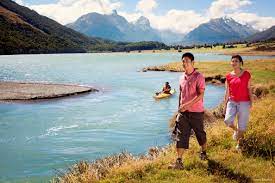Jennifer Jones, nữ chủ tịch đầu tiên của Rotary International, đã ca ngợi các dự án địa phương ở New Zealand là một trong những dự án tốt nhất mà cô từng thấy trong chuyến du lịch toàn cầu của mình. Jones, người đến từ Canada, trở thành chủ tịch thế giới của Rotary International vào năm 2022, làm nên lịch sử với tư cách là người phụ nữ đầu tiên giữ vị trí đó trong lịch sử 118 năm của tổ chức.
Jones đã ở New Zealand để thăm các dự án do một số câu lạc bộ điều hành. Cô đã đến thăm Nelson và Tasman trước khi đến Christchurch để trở thành diễn giả chính tại Hội nghị Rotary South Island. Cô đặc biệt ấn tượng bởi các dự án cô thấy ở Nelson.
Jones gia nhập Rotary vào những năm 1990. Trước đó, cô làm phóng viên đưa tin về các cuộc họp của câu lạc bộ vào thời điểm phụ nữ không được phép tham gia. Điều này đã thay đổi vào năm 1987 khi Tòa án Tối cao Hoa Kỳ phán quyết rằng các câu lạc bộ Rotary không thể loại trừ phụ nữ dựa trên giới tính của họ. Tuy nhiên, phải mất 35 năm nữa để một phụ nữ được bổ nhiệm làm chủ tịch thế giới của tổ chức này.
Jones cho biết trở thành nữ tổng thống đầu tiên là một vinh dự hoàn toàn và cô hy vọng nó sẽ truyền cảm hứng cho những người khác. Cô nói, “Có lẽ nó đã mở ra cánh cửa cho một người nói: ‘Nếu cô ấy có thể làm điều đó, tôi cũng có thể, và tôi thực sự hạnh phúc về điều đó.”
Rotary International hiện có hơn 1,4 triệu thành viên tại khoảng 46.000 câu lạc bộ trên hơn 200 quốc gia. Trong thời gian làm tổng thống, Jones đã đi đến 57 quốc gia, bao gồm cả New Zealand, nơi mà cô nói là một trong những quốc gia yêu thích của cô.
Khi ở Nelson, Jones đã đến thăm một số dự án do Rotary tài trợ. Chúng bao gồm một trung tâm dành cho người vô gia cư, một chương trình cố vấn cho những người trẻ tuổi và một dịch vụ giảm thiểu lãng phí thực phẩm. Cô cũng gặp gỡ các tình nguyện viên từ Days for Girls, một tổ chức phi lợi nhuận chuyên sản xuất và phân phối các sản phẩm sức khỏe kinh nguyệt có thể tái sử dụng. Những sản phẩm này thường được trao cho những cô gái nếu không sẽ nghỉ học trong kỳ kinh nguyệt hàng tháng của họ.




























































